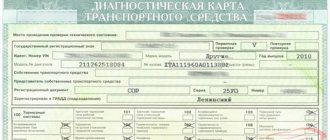The experience of subrogation disputes regarding the transfer of compensation obligations to insurance companies and individuals who are legally recognized as victims of road accidents and are the objects of compulsory motor liability insurance) is widely described in legal practice.
However, these stories and professional comments on them, a review of law enforcement practice, are not replete with recommendations for solving these unpleasant situations. On the one hand, this is justified: why publish practical recommendations in the legal field in the public domain, when you can use them, accumulated experience, directly for legal advice on the spot, and receive additional income from professional activities? However, the magazine “Legal Guarantee” and the portal “Zasudili.ru” serve precisely the interests of people, which is why practical solutions described below are proposed here. Let us analyze the practical situation on the topic of subrogation and consider possible solutions in the legal field, solutions necessary to protect the defendant.
In 2015, citizen X, who issued a compulsory motor liability insurance policy in a timely manner, was found to be at fault for the accident. The injured party has a CASCO policy, the guilty party has a compulsory motor liability insurance policy. The drivers did not agree to resolve the situation without the traffic police, and its solution in the “Euro protocol” format is impossible under the terms of the CASCO policy of one of the parties. After the protocols are drawn up and the participants in the car accident visit the traffic police, the insurance companies of the victim and those responsible for the accident come into play. In the absence of an agreement to estimate the cost of repairs, a technical examination is carried out, to which the person responsible for the accident is not even invited; not required by law.
As a result of the examination, relatively small damage was assessed, just over 50,000 rubles. The insurance company of the person responsible for the accident soon paid the required compensation to the insurance company from the injured party, but the insurance companies did not agree on the amount and disputed (without the participants in the accident or their notification) the difference of 13,000 rubles - for two and a half years, in In particular, the insurance company of the guilty party filed an appeal against the decision of the Arbitration Court to the Supreme Court. However, in the end, a decision was made to leave the decision of the Arbitration Court unchanged, and the disputed amount had to be recovered from citizen X, who was found guilty of the accident.
The three-year period was not missed, so citizen X received a demand for a voluntary payment of 13,000 rubles to the account of the injured party’s insurance company. The pre-trial claim states that, in accordance with Art. 1072 of the Civil Code of the Russian Federation, as well as the Resolution of the Constitutional Court of the Russian Federation dated March 10, 2017, X must pay the difference between the actual damage and the insurance compensation paid by the insurance company acting on his part. The amount of damage caused did not exceed the maximum amount of insurance compensation, which in 2015 amounted to 120,000 rubles. and by virtue of the law, recovered from the insurance company (clause c, article 7 of the Federal Law of April 25, 2002 N 40-FZ “On compulsory insurance of civil liability of vehicle owners” (as amended by the Federal Law of July 21, 2014 N 223-FZ )). Thus, the insurance company of the guilty party compensated the amount of damage in the amount of 46,013.61 rubles. (38,200 rubles - voluntarily and in court - 7,813 rubles 61 kopecks).
X, who had a compulsory motor liability insurance policy and had previously fulfilled all the insurance conditions as a law-abiding citizen, did not voluntarily pay the claim of the insurance injured party, and was soon summoned to a magistrate’s court hearing at his place of registration as a defendant in a subrogation case. The decision of the magistrate was justified by Art. Art. 15, 965, 1064, 1072, 1079 of the Civil Code of the Russian Federation, Decree of the Constitutional Court dated March 10, 2017 No. 6-P, Federal Law “On compulsory insurance of civil liability of vehicle owners” No. 40 dated April 25, 2002, Government Decree No. 263, other regulations - legal acts, and stated to recover from X in favor of the plaintiff - the insurance company of the injured party - the amount of approximately 13 thousand rubles and the amount of state duty.
The application to appeal the decision of the first instance court was sent to the district court within the deadlines. When considering the case in the district court, nuances were identified in which we can recommend certain tactics for dealing with such disputes.
The examination was carried out without the participation of the defendant.
There are nuances in such cases - in the court of first instance it is necessary to insist on a re-examination. If the court refuses this requirement, then on appeal this decision must be overturned. Even if the initiator-defendant does not pay for it (promise, but not pay), the court will oblige it to be carried out, since advance payment for the examination when applying for it in court is not provided for by law. Having collected and examined the case materials, previous examinations, this step is a real reason to reconsider the claims of the plaintiff insurance company and refuse to satisfy the claim. Few people know this. Direct participants in road accidents - drivers in such cases, as a rule, are not involved in the examination - insurance companies do everything themselves. There are a lot of such cases now. If you received an insurance claim for subrogation or, as it is clearly called, “On the collection of insurance compensation (payments) (property insurance) under a CASCO agreement,” since the injured party had a CASCO policy, you are not obliged to pay the entire amount that is required of you plaintiff insurance company. Statistics from law enforcement practice, according to the judge, are such that the amount of subrogation claims is overestimated by an average of 25-40%. It is possible to identify and prove this excess both pre-trial and in court - in different steps. In addition, according to the Constitutional Court Resolution of March 10, 2017, damage can be claimed with the deduction of wear and tear of the parts being replaced.
Subrogation for liability insurance
Subrogation in liability insurance is the subject of much discussion and, as practice shows, including judicial practice, it still remains a poorly understood subject. In this connection, I bring to your attention a small study of this issue.
As is known, liability insurance in civil law is divided into:
- Liability insurance for causing harm (non-contractual liability or tortious) (931 Civil Code of the Russian Federation).
- Insurance of liability for breach of contract (contractual liability) (932 Civil Code of the Russian Federation).
Let's consider cases of the possibility of subrogation for each type of liability insurance.
1. Tort liability arises when someone is injured by their own actions, such as accidentally flooding their neighbors downstairs, damaging someone's car in an accident, or damaging cargo they are transporting through their own fault. This type of insurance is regulated by Art. 931 Civil Code of the Russian Federation:
In accordance with Part 1 of Art. 931 of the Civil Code of the Russian Federation “Under an agreement to insure the risk of liability for obligations arising as a result of causing harm to the life, health or property of other persons, the risk of liability of the policyholder himself or another person who may be assigned such liability may be insured.”
That is, an insured event under such a contract is the occurrence of liability either by the policyholder himself or by the persons insured by him as a result of causing harm to third parties. For the possibility of subrogation, in accordance with Part 1 of Art. 965 of the Civil Code of the Russian Federation, it is necessary for the policyholder to have a right of claim, which will have to pass to the insurer. What right of claim does the insured have in this case and to whom does he have the right to make a claim for compensation for damage? Obviously, only to himself. In turn, the right of claim against oneself is the coincidence of the debtor and the creditor in one person, and entails, as is well known, the termination of the obligation. The insurer also has an obligation to compensate the victim for damage. Accordingly, apart from the obligation to compensate for damage to third parties, nothing else can pass to the insurer.
However, it may be objected that in Art. 965 of the Civil Code of the Russian Federation we are talking about the transfer to the insurer of rights not only from the policyholder, but also from the beneficiary, who under insurance contracts of any liability is always the victim. Let us suppose. Then the right to claim from the beneficiary to the insured is transferred to the insurer. However, subrogation to the policyholder is impossible, since in this case the insurer has not fulfilled the obligation to protect the property interests of the policyholder. I already wrote about this here.
Accordingly, the conclusion is: the right that passes to the insurer when insuring tort liability, by way of subrogation, is absent and, therefore, subrogation is impossible .
2. The second type of liability insurance is liability insurance under a contract, which, as is known, is allowed in cases provided only by the Law: Part 1 of Art. 932 of the Civil Code of the Russian Federation “Insurance of the risk of liability for breach of contract is permitted in cases provided for by law .
, only the risk of liability of the policyholder himself can be insured . An insurance contract that does not comply with this requirement is void.”
Based on this norm, only the personal liability of the policyholder is insured. When contractual losses are caused, the insured must compensate the counterparty for failure to fulfill the obligation, but if the direct culprit in causing the losses is not the insured, but some third party, does the insurer have the right, after paying compensation, to make a subrogation claim against this person? Let us consider, for example, the following situation: the policyholder, who has insured his contractual liability, suddenly, due to the fault of a third party, becomes liable. The right of claim that he may have is the right of recourse (reverse) claim against the direct cause of harm, which will arise for the insured only after he has compensated for the damage.
In turn, this right is transferred to the insurer by way of subrogation only after the insurer has paid the insurance compensation, as is expressly stated in Art. 965 of the Civil Code of the Russian Federation. But if the insured, and not the insurer, paid for the loss, where will the insurer get the right to subrogation?
If the insurer made the payment to the injured party, then no right can pass to the insurer, since the insured has no right of recourse, he did not pay anything to anyone, the insurer did it for him. And as we remember, the right of recourse arises only after compensation for losses.
However, as I already wrote, the right of claim passes not only from the insured, but also from the beneficiary, that is, from the injured person, and in this case, the injured person, as usual, will have any claims only against the insured. And subrogation to the policyholder is impossible.
3. If the liability insurance contract was concluded in violation of Art. 932 of the Civil Code of the Russian Federation and under such an agreement subrogation claims were presented to a third party, then in this case Part 2 of Art. 168 of the Civil Code of the Russian Federation, in accordance with which “A transaction that violates the requirements of a law or other legal act and at the same time encroaches on public interests or the rights and interests protected by law of third parties is void unless it follows from the law that such a transaction is contestable or other rules must be applied.” consequences of a violation not related to the invalidity of the transaction.”
It follows from this that the conclusion by the Insured and the Insurer of such an agreement and the presentation of subrogation or recourse claims to third parties directly infringes on the property interests of these same third parties, and accordingly is void. And if so, then in this case neither recourse nor subrogation is possible.
Thus, in any case, subrogation under a liability insurance contract is impossible due to the absence of a transferable right.
Litigation during subrogation in CASCO
In this case, absentee proceedings are most often used. That is, the insurance company does not summon the culprit of the incident to the judicial authorities, but is limited to sending a claim in which he is asked to make compensation on a voluntary basis through the procedure of subrogation, indicating the cost.
Moreover, as a rule, he does not receive such a notification immediately, but after several years (usually within 2–2.5), by this time a person may no longer remember that it was his fault that this or that accident occurred, if , of course, it was not too large-scale and catastrophic.
However, he is obliged to decide whether the amount of penalties imposed is justified. He can appeal it or agree with the insurance company to make payments in installments, and here in most cases they meet him halfway.
Sometimes, in order to reduce the cost of payments and resolve the loan issue, a qualified lawyer helps. By the way, most insurance companies are not interested in litigation of this scale, therefore, if possible, they will allow the person at fault to pay the debt in parts and reduce its amount.
So, if you have received such a notice with a request to pay subrogation funds, then you should not be nervous, especially if you have nothing to do with the accident or other incidents. Probably, scammers just want to deceive you, hiding behind the name of the insurance company. In this case, you should be very careful and know how to protect your rights.
Features of compensation for damage through subrogation
One of the features of compensation for damage by subrogation is that when replacing a creditor, the original creditor must transfer to the insurer all documents related to the right of claim, as well as provide all the necessary information so that the insurer can claim compensation.
Also, the property insurance contract cannot contain a clause canceling the insurer’s subrogation right, since it is established by law. Such a condition will be considered void.
In addition to the provisions of the Civil Code, the provisions of Resolution of the Plenum of the Supreme Court No. 58 also work in the field of compensation for damage by subrogation. According to them, for example, an insurer under CASCO (voluntary comprehensive property insurance of a car) can pay the victim compensation that exceeds the amount of payment under compulsory motor liability insurance.
In this case, the insurance company may recover damages through subrogation from the insurance company responsible for the accident. The amount of recovery will be limited to the amount of payment under compulsory motor liability insurance that the relevant insurance company should have made.
The relationship between the insurer and the debtor will be governed by the same rules of law that would govern the relationship between the original creditor and the debtor.
Certain types of property insurance contracts are regulated by other legislative acts, which may slightly change the terms of compensation for damage through the procedure of subrogation.
How to check the legality of subrogation claims under MTPL
It is possible that insurance companies resort to tricks to make money on the at-fault driver. Therefore, all available documents should be studied with special attention. It is best to enlist the help of a professional, this will avoid mistakes that allow you not to make a payment.
Sometimes false information is provided regarding the amount of damage, since it will not be difficult for the insurer to obtain those indicators that are beneficial to it. First of all, you should check the following:
- Have all the spare parts on the list been replaced?
- Is the indicated cost of spare parts and restoration work realistic;
- Whether the indicated damage corresponds to a specific road accident;
- Is each part marked only once (sometimes parts are listed several times).
It is best to contact a professional who will check all the calculations made. If there is erroneous information that is strikingly different from the real one, it must be written down on paper. The document can serve as the basis for constructive communication with the insurer, and will also be useful in court if the matter comes to trial.
How to negotiate subrogation under MTPL
If, after an inspection, it turns out that the insurance company is making legitimate demands, and reimbursement of its expenses cannot be avoided, it is best to come to an agreement. Insurers themselves do not like to participate in litigation, so they are usually willing to make concessions, reducing the amount of compensation or allowing the money to be transferred in installments.
Trial
If it was not possible to resolve the problem peacefully, then the insurance company has every right to file a lawsuit. The company does not always try to solve the problem peacefully, but simply goes to court. The defendant may find out about this when he receives a summons to the hearing.
Proof
At this stage, the same steps are repeated as when filing a claim with the insurer, checking the legality of the claims. The only difference is that disagreement is expressed not to the insurance organization, but to the judge.
If there are doubts regarding the assessment, a request for a forensic examination can be submitted. It is usually performed using written information and photographs. When conducting technical examinations before the start of the trial, their results must be attached.
Another important argument is the lack of invitations to conduct an expert examination of the damage to the victim’s vehicle. In this case, the insurer's expert's conclusion may be declared invalid.
It is important to pay attention to documentation of guilt. If the conclusions are ambiguous, you can submit a request for another examination.
Judgment
If violations are detected in the actions of the insurance organization, the court will in any case determine this and issue a refusal result. Even if the court of first instance decides in favor of the insurer, do not despair.
If there are grounds for a dispute, it makes sense to file an appeal. Higher courts often make decisions in favor of the car owner.
What to do when receiving a subrogation claim
Under no circumstances should the requirement be ignored. If the insurance company sees that the person at fault for the accident did not react in any way, it will file a lawsuit. In case of failure to appear at the meeting, the plaintiff’s demands will most likely be satisfied even if there are serious violations. The law sets a 3-year period for filing a claim after an accident. The consideration of the case itself may take place later.
It is best to settle the matter before going to court. In any case, such attempts will be welcomed by the judge. Such actions will be viewed in a positive light for the defendant. Therefore, it is better to try to settle the matter. Get acquainted with the requirements of the insurance organization, determine whether they are legal. It would be ideal if the case has expired - more than 3 years have passed since compensation for the accident.
If the deadlines are met, the following steps must be completed.
Verification of documents on subrogation under compulsory motor liability insurance
When filing a claim for subrogation, the insurer is obliged to confirm it with the following documentation:
- CASCO agreement with the victim, which was in force at the time of the traffic accident;
- evidence of guilt - a decision on violation of traffic rules, a decision to initiate a criminal case, a court decision, etc.;
- confirmation of payment for compensation of losses - cash or money transfer to a bank account;
- documents from the road inspection that confirm the traffic accident;
- confirmation of the amount of damage - the conclusion of an expert examination of the damage with a detailed description and images, determination of the cost of restoration or an estimate from a car service center, an act of acceptance and delivery of the results of restoration work.
If any of the documents listed above are missing, you must send a request to provide the necessary documentation in response to the claim. Without this, the motorist has every right not to make the payment.
The concept of mutual guilt
Legal acts do not establish an exact definition of the result of non-compliance by several road users with the rules, which led to a collision. The term has only practical application. Violation of regulations by the driver is not a direct basis for establishing mutual guilt.
In what cases is it recognized?
Mutual guilt in an accident is recorded by the traffic police officer when determining the circumstances of the emergency. Cases of establishing a violation by several drivers that led to a collision:
- It is impossible to determine the guilty party in the event of a traffic accident in unregulated traffic areas: parking lots, parking lots, adjacent areas.
- Accurate identification of non-compliance with rules by several road users that led to an accident.
- Admission of guilt by both drivers.
Recording non-compliance with traffic rules is within the competence of the traffic police officer. In the event of a traffic accident, a protocol on an administrative offense is sent to the executive authority. The guilty party is established during the trial if it is impossible to determine the violator on the spot and the inspector’s decision is challenged. If both drivers admit to non-compliance with traffic rules, a higher authority will award compensation for each.
Determining degrees of guilt
A mutual accident is the reason for a trial. In case of non-compliance with traffic rules, which resulted in a collision between vehicles of several participants at once, the degree of guilt of each driver is determined. Both car owners are equally likely to break the rules. A prerequisite is the establishment of a direct cause-and-effect relationship between the unlawful action of both participants while driving a vehicle of equal severity and the incident.
Violation of traffic rules is not necessarily the cause of an emergency. The fact of non-compliance with the points of the regulatory document is not a sufficient basis for establishing mutual guilt in an accident. To determine the equal degree of involvement, the number of traffic rules violated is taken into account, and the penalty is assigned in accordance with the Code of Administrative Offences.
Who pays for the damage
A valid MTPL policy allows you to receive partial or full compensation to restore a damaged car. Car owners should know who pays for damages in the event of an accident. According to clause 22 of Article 12 of Federal Law No. 40, both drivers have the right to receive payments from their own insurance company. The amount of charges depends on the degree of fault of the participant in the emergency situation.
How to prove mutual guilt in court
The grounds for confirming violation of traffic rules by several drivers are the testimony of witnesses, recording of the accident by CCTV cameras, brake marks, and the degree of damage to each vehicle.
The court takes into account the data reflected by the traffic police inspector in the protocol and resolution. When considering the case, all circumstances are taken into account: weather conditions, state of the highway.
To establish innocence, participants in an emergency situation can call an independent expert to draw up an auto technical and assessment report. The court's decision depends on the totality of the information provided.








